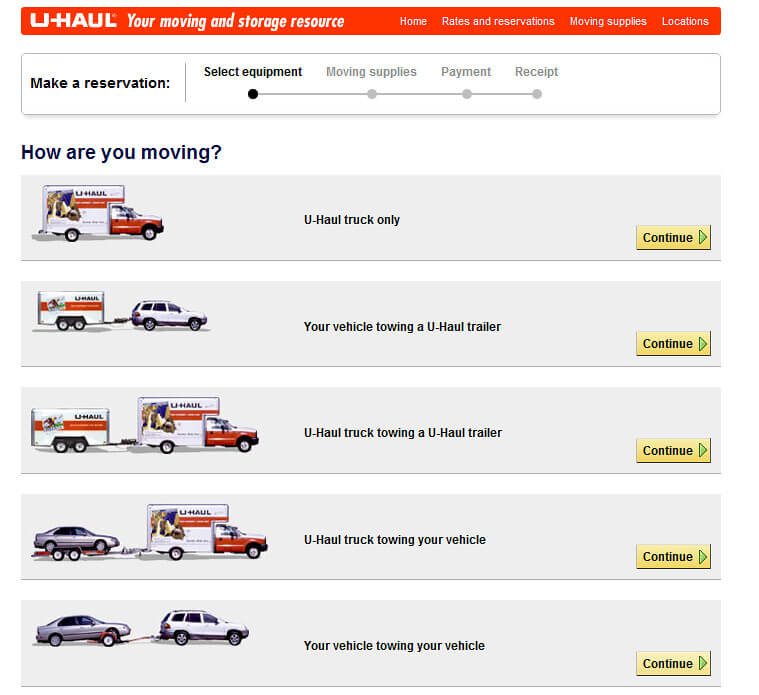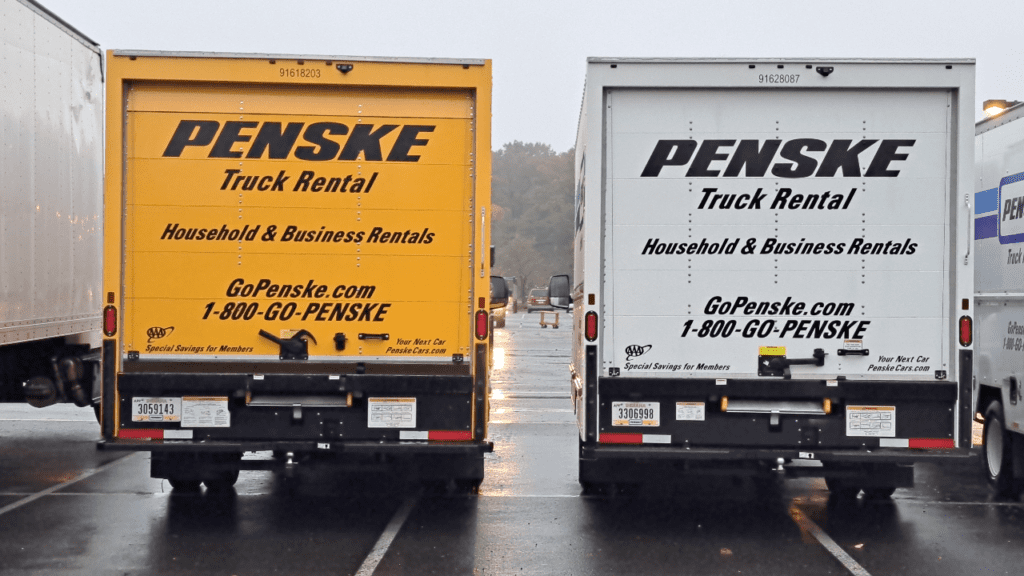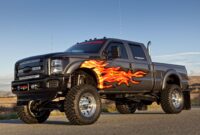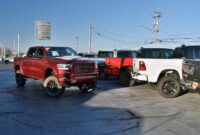The Ultimate Guide to Rental Truck Sizes: Choosing the Right Wheels for Your Move cars.truckstrend.com
Moving can be one of life’s most stressful events, but choosing the right rental truck size doesn’t have to add to the burden. In fact, selecting the appropriate vehicle is arguably the most critical decision you’ll make when planning a DIY move. The term "rental truck size" refers to the cubic capacity and physical dimensions of the moving truck you hire, determining how much of your belongings it can comfortably and safely transport in one go. Get it wrong, and you could face multiple trips, wasted time and fuel, potential damage to your items, or unnecessarily high costs for a truck that’s far too large. Get it right, and you’ll enjoy a smoother, more efficient, and cost-effective moving day. This comprehensive guide will walk you through everything you need to know to confidently select the perfect rental truck size for your next big move.
Understanding the Basics: Why Size Matters
The Ultimate Guide to Rental Truck Sizes: Choosing the Right Wheels for Your Move
The importance of choosing the correct rental truck size cannot be overstated. It’s a foundational decision that impacts nearly every aspect of your moving experience.
- Too Small: If your truck is too small, you’ll be forced to leave items behind, make multiple trips (if moving locally), or risk damaging your belongings by overpacking the truck. Multiple trips mean more time, more fuel expenses, and more physical exertion. Overpacking can lead to items shifting and breaking during transit.
- Too Big: While less catastrophic than a truck that’s too small, a truck that’s too large also presents challenges. You’ll pay more for a larger vehicle, use more fuel, and potentially struggle with driving and parking a vehicle that’s beyond your comfort level or necessary capacity. Empty space in a truck also allows items to shift more freely, increasing the risk of damage.
The ideal rental truck size strikes a balance between accommodating all your belongings and being manageable to drive and cost-effective. Key factors influencing your choice include the total volume of your items, the type and fragility of what you’re moving, the distance of your move, and your budget.
Common Rental Truck Sizes Explained
Rental truck companies like U-Haul, Budget, Penske, and Enterprise offer a range of sizes designed to meet various moving needs. While exact dimensions and cubic capacities can vary slightly between providers, they generally fall into predictable categories.

1. Small Trucks: Cargo Vans & 10-Foot Trucks
- Typical Capacity: 70-400 cubic feet
- Ideal For: Studio apartments, dorm rooms, small 1-bedroom apartments, moving a few large appliances or pieces of furniture, local deliveries, hauling materials for home improvement projects.
- Dimensions:

- Cargo Vans: Usually around 7-10 feet long interior, 4-5 feet wide, 4-5 feet high.
- 10-Foot Trucks: Typically 9-10 feet long interior, 6-7 feet wide, 6-7 feet high.
- Pros: Easiest to drive and park, similar to driving a large SUV; most fuel-efficient; often the cheapest option.
- Cons: Limited space, not suitable for entire homes or even larger apartments.
- Use Case: Perfect for a college student moving out of a dorm or a couple moving into their first studio.

2. Medium Trucks: 15-Foot & 17-Foot Trucks
- Typical Capacity: 600-900 cubic feet
- Ideal For: 1-2 bedroom apartments, small homes, larger townhouses, moving multiple rooms of furniture, including bulky items like sofas and queen-sized beds.
- Dimensions:
- 15-Foot Trucks: Around 14-15 feet long interior, 7-8 feet wide, 7-8 feet high.
- 17-Foot Trucks: Around 16-17 feet long interior, 7-8 feet wide, 7-8 feet high.
- Pros: Good balance of space and maneuverability; most common size for average household moves; often includes a loading ramp.
- Cons: Less fuel-efficient than smaller trucks; requires more caution when driving and parking.
- Use Case: A family moving from a two-bedroom apartment to a small house, or someone combining households.
3. Large Trucks: 20-Foot & 26-Foot Trucks
- Typical Capacity: 1,000-1,600 cubic feet
- Ideal For: 2-4+ bedroom homes, large multi-room apartments, large item transport, full household moves.
- Dimensions:
- 20-Foot Trucks: Around 19-20 feet long interior, 7-8 feet wide, 7-8 feet high.
- 26-Foot Trucks: Around 25-26 feet long interior, 7-8 feet wide, 8-9 feet high.
- Pros: Ample space for almost any household move; typically includes a loading ramp.
- Cons: Most challenging to drive and park, especially for inexperienced drivers; highest fuel consumption; more expensive rental rates.
- Use Case: A large family moving across town or across the country, or someone consolidating a significant amount of furniture and boxes.
How to Estimate Your Moving Volume (The Key to Sizing)
Accurately estimating your moving volume is the most crucial step in choosing the right truck size. Here’s a practical approach:
- Room-by-Room Inventory: Walk through your home, room by room, and list every item you intend to move. Don’t forget closets, the garage, attic, and basement. Categorize items (e.g., "large furniture," "medium furniture," "small appliances," "boxes").
- Utilize Online Calculators: Most major rental truck companies (U-Haul, Budget, Penske) offer online moving truck size calculators. You input the number and type of rooms, or even specific items, and they’ll suggest a truck size. These are excellent starting points.
- Visual Estimation: Imagine your packed belongings fitting into a rectangular space. Try to visualize how many "box equivalents" each room represents.
- Measure Large or Awkward Items: Sofas, king-size beds, refrigerators, washing machines, and exercise equipment take up significant space. Note their dimensions.
- Consider "What Fits in a Box?": A good rule of thumb is that a typical 1-bedroom apartment might require around 50-70 moving boxes plus furniture. A 2-bedroom might need 80-120 boxes. This helps you factor in the "small stuff."
- Err on the Side of Slightly Larger: If you’re debating between two sizes, it’s almost always better to choose the slightly larger truck. A little extra space is far less problematic than not having enough. You can always use moving blankets or padding to fill gaps and prevent shifting.
Important Considerations Beyond Just Cubic Feet
While cubic capacity is paramount, other factors play a significant role in your truck size decision and overall moving experience:
- Loading Ramp/Lift Gate: Most medium and large trucks come with a built-in loading ramp, which is indispensable for moving heavy furniture and appliances. Some larger commercial trucks may offer a hydraulic lift gate, though these are less common for standard consumer rentals. Always confirm if a ramp is included and if it’s suitable for your needs.
- Tie-Down Points: Ensure the truck has ample tie-down rails or points to secure your cargo. This prevents shifting during transit, which can lead to damage.
- Fuel Efficiency: Larger trucks consume significantly more fuel. Factor this into your budget, especially for long-distance moves.
- Driving Experience: If you’re not accustomed to driving large vehicles, consider the maneuverability. A 26-foot truck handles very differently than your personal car. Practice in an empty parking lot if possible.
- Parking and Maneuvering: Think about your current and destination properties. Are there tight turns, low clearances, or limited parking? A large truck might be difficult to navigate in urban areas or narrow driveways.
- Towing Capability: If you plan to tow your car behind the moving truck, ensure the chosen truck size has a tow hitch and the necessary towing capacity.
- Rental Company Specifics: While sizes are generally categorized, each company has its own fleet. U-Haul, Budget, and Penske might have slightly different truck models, features, or availability. Researching each company’s specific offerings for your chosen size is wise.
Tips for a Smooth Rental Experience
- Book Early: Especially during peak moving seasons (summer, end of month), popular truck sizes can be scarce. Book weeks or even months in advance.
- Inspect the Truck: Before you drive away, thoroughly inspect the truck for any existing damage (scratches, dents, broken mirrors). Take photos or videos and ensure they are noted on your rental agreement to avoid being held responsible later.
- Understand Insurance Options: Your personal auto insurance may not cover rental trucks, or may only offer limited coverage. Rental companies offer various insurance plans (damage waivers, liability coverage). Carefully consider what coverage you need.
- Familiarize Yourself with Controls: Before hitting the road, get comfortable with the truck’s controls, mirrors, and blind spots. Adjust your seat and mirrors.
- Pack Efficiently: Maximize space by packing boxes uniformly and disassembling furniture. Load heavy items first and distribute weight evenly.
- Distribute Weight Evenly: Place heavier items towards the front of the truck (behind the cab) and low to the floor. This helps with stability and handling.
Potential Challenges and Solutions
- Underestimated Size: If you realize too late your truck is too small, your options are limited. For local moves, you might make multiple trips or rent a second, smaller vehicle. For long-distance, you may need to sell, donate, or leave items behind, or ship them separately. This highlights why overestimating slightly is safer.
- Overestimated Size: While less ideal due to cost, having too much space is better than too little. Focus on smart packing to prevent items from shifting. Use plenty of moving blankets, packing paper, and ropes to secure your load.
- Driving a Large Vehicle: If you’re nervous, practice in an empty parking lot. Take wide turns, use your mirrors frequently, and allow for extra braking distance. Plan your route to avoid low bridges, narrow streets, or challenging parking situations.
- Hidden Fees: Always read the rental agreement carefully. Be aware of mileage charges (if not unlimited), fuel requirements (return with the same amount of fuel), late return fees, and cleaning fees.
Rental Truck Size: Estimated Price Guide
Please note: These are estimated prices and can vary significantly based on location, time of year, day of the week, duration of rental, mileage, and specific rental company promotions. It’s crucial to get a direct quote for your specific needs.
| Truck Size | Typical Cubic Feet | Ideal For | Estimated Local Daily Rate (Excl. Mileage) | Estimated Long-Distance (Per Mile) |
|---|---|---|---|---|
| Cargo Van | 70 – 250 cu ft | Studio, Dorm Room, Large Appliances | $19.95 – $39.95 | $0.59 – $0.89 |
| 10-Foot Truck | 300 – 400 cu ft | Studio, Small 1-Bedroom Apartment | $19.95 – $49.95 | $0.69 – $0.99 |
| 15-Foot Truck | 600 – 700 cu ft | 1-2 Bedroom Apartment/Small Home | $29.95 – $69.95 | $0.79 – $1.09 |
| 17-Foot Truck | 800 – 900 cu ft | 2 Bedroom Home, Larger Apartment | $39.95 – $79.95 | $0.89 – $1.19 |
| 20-Foot Truck | 1,000 – 1,200 cu ft | 2-3 Bedroom Home | $39.95 – $89.95 | $0.99 – $1.29 |
| 26-Foot Truck | 1,400 – 1,600 cu ft | 3-4+ Bedroom Home | $49.95 – $99.95 | $0.99 – $1.29 |
Note: For long-distance moves, many companies offer fixed rates that include a certain number of days and miles, rather than a per-mile charge. Always confirm the pricing structure.
Frequently Asked Questions (FAQ)
Q: Can I drive a large rental truck with a regular driver’s license?
A: In most states and provinces in North America, you can drive any size rental moving truck (like those offered by U-Haul, Budget, Penske) with a standard Class D (or equivalent) driver’s license, as long as it’s for non-commercial use. Commercial Driver’s Licenses (CDLs) are typically required for much larger vehicles or specific commercial purposes.
Q: Is it better to get a truck that’s too big or too small?
A: It is almost always better to get a truck that is slightly too big than one that is too small. While a larger truck might cost a bit more and be slightly less fuel-efficient, it prevents the major headache of not being able to fit all your belongings, forcing multiple trips, or risking damage due to overcrowding.
Q: Do rental trucks come with ramps?
A: Most medium (15-foot and up) and large rental trucks come equipped with a built-in loading ramp to make loading and unloading heavy items easier. However, it’s always wise to confirm this when booking your truck, especially for smaller sizes.
Q: How is mileage calculated for rental trucks?
A: For local moves, rental truck companies often charge a daily rate plus a per-mile charge. For long-distance or one-way moves, they typically offer a flat rate that includes a set number of days and miles, with additional charges if you exceed those limits. Always clarify the mileage policy before signing the agreement.
Q: What’s the difference between U-Haul, Budget, and Penske?
A: While all three are major rental truck providers, they have some differences. U-Haul is known for its wide availability and large network of neighborhood dealers. Budget often competes on price and has a good range of truck sizes. Penske is generally perceived as having newer, better-maintained trucks, especially for long-distance moves, and often includes unlimited mileage on one-way rentals. Availability of specific truck sizes can vary by location and company.
Q: Should I get insurance for a rental truck?
A: It is highly recommended. Your personal auto insurance policy may not cover rental trucks, or may only offer limited coverage. Rental truck companies offer various damage waivers and supplemental liability insurance options. Carefully review what your existing policies cover and what additional protection you might need to protect yourself and your belongings.
Conclusion
Choosing the right rental truck size is the cornerstone of a successful and stress-free DIY move. By taking the time to accurately estimate your belongings’ volume, understanding the capacities and features of different truck sizes, and considering important practicalities like driving comfort and accessibility, you can make an informed decision. Remember that a little extra space is always preferable to not enough. With careful planning and the right rental truck, you’ll be well on your way to a smooth and efficient moving day, saving both time and money in the process.



